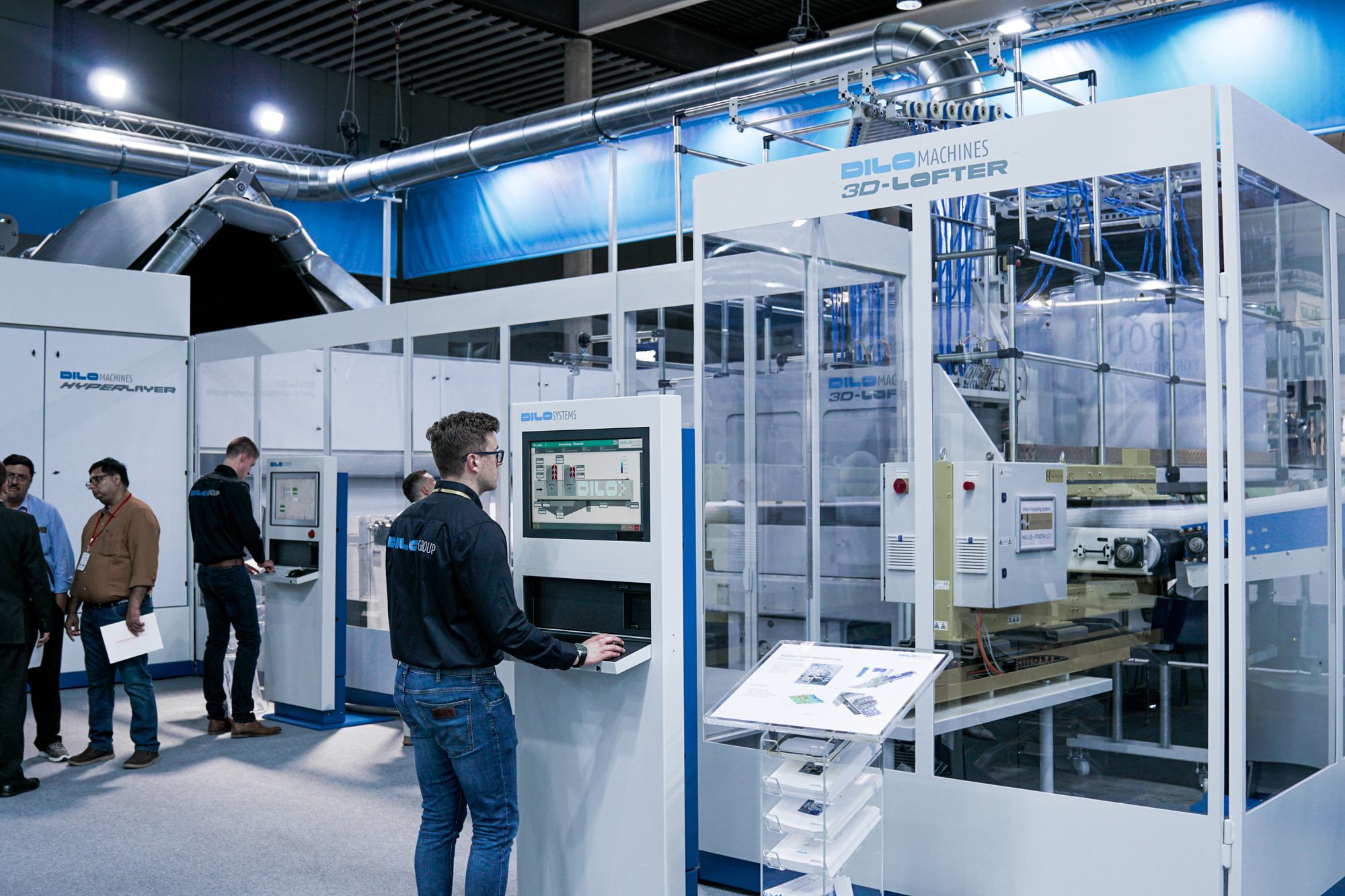Do you want to have a better understanding of six essential steps to effective procurement in manufacturing? If yes, then you are on the right page.

Effective procurement is a cornerstone of successful manufacturing operations, ensuring the timely and efficient acquisition of essential materials, components, and services necessary for production. In the dynamic landscape of modern manufacturing, optimizing procurement practices is paramount to achieving cost savings, maintaining product quality, and sustaining a competitive edge.
The journey toward effective procurement involves a strategic approach that encompasses six essential steps. These steps, from forecasting demand to supplier relationship management, form the foundation of a streamlined and resilient procurement process that empowers manufacturing organizations to navigate challenges, capitalize on opportunities, and deliver value to customers and stakeholders alike.
In this article, we will delve into each of these steps, unraveling the intricacies that underpin their significance and unveiling the best practices that elevate procurement from a routine activity to a strategic imperative in the realm of manufacturing excellence.
The topics covered in this article are:
- What is Procurement?
- What is Effective Procurement?
- Importance of Effective Procurement
- What is Manufacturing?
- Six Essential Steps to Effective Procurement in Manufacturing
- How can Deskera Help You with Procurement?
- Key Takeaways
- Related Articles
What is Procurement?
Procurement refers to the process of acquiring goods, services, or works from external sources to meet an organization's needs. It involves various activities, such as sourcing, selecting suppliers, negotiating contracts, purchasing, and managing relationships with suppliers. The primary goal of procurement is to obtain the required materials, components, and services at the right quality, quantity, time, and cost to support an organization's operations and objectives.
Procurement can encompass a wide range of items, including raw materials, equipment, machinery, components, finished products, services (such as transportation, maintenance, and consulting), and even intellectual property. It's a strategic function within an organization that plays a critical role in ensuring that the necessary inputs are available for production, services, or project execution.
Effective procurement involves careful planning, supplier evaluation, negotiation, risk management, and ongoing relationship management to ensure the smooth flow of resources and contribute to overall operational efficiency and cost savings. It's an essential aspect of supply chain management and has a significant impact on an organization's competitiveness, profitability, and ability to meet customer demands.
What is Effective Procurement?
Effective procurement refers to the successful and efficient management of the entire procurement process to achieve the best possible outcomes for an organization. It involves making strategic decisions and executing activities that lead to acquiring the right goods, services, or works at the right quality, quantity, time, and cost. Effective procurement goes beyond simply making purchases; it encompasses a range of practices that contribute to the organization's overall success.
Here are the key characteristics of effective procurement:
- Strategic Alignment: Effective procurement aligns with the organization's strategic goals, business plans, and overall objectives. It considers the impact of procurement decisions on the organization's competitiveness, growth, and financial performance.
- Supplier Collaboration: It involves building strong and collaborative relationships with suppliers. Effective procurement recognizes the importance of partnerships, mutual benefits, and shared value creation with suppliers.
- Value Creation: Effective procurement goes beyond cost savings. It focuses on maximizing the value obtained from suppliers, including factors like quality, innovation, reliability, and supplier performance.
- Risk Management: It identifies and addresses potential risks that could disrupt the supply chain. Effective procurement includes risk assessment, contingency planning, and proactive measures to mitigate risks.
- Continuous Improvement: Effective procurement involves ongoing assessment and enhancement of procurement processes. It seeks opportunities for innovation, efficiency gains, and optimization of resource utilization.
- Data-Driven Decision-Making: It relies on data and analytics to inform procurement decisions. Effective procurement uses data to assess supplier performance, track key performance indicators, and identify trends.
- Transparency and Compliance: Effective procurement ensures transparency in processes and adheres to legal, regulatory, and ethical standards. It promotes fair and ethical treatment of suppliers.
- Supplier Evaluation: It involves a thorough evaluation of potential and existing suppliers based on factors like quality, reliability, financial stability, and alignment with organizational values.
- Negotiation and Contracting: Effective procurement includes skillful negotiation to secure favorable terms, pricing, and conditions. It also involves drafting well-structured contracts that define expectations and responsibilities clearly.
- Communication and Collaboration: Effective procurement maintains open communication with internal stakeholders and suppliers. It involves collaboration to gather insights, share information, and address challenges.
- Flexibility and Adaptability: It acknowledges the dynamic nature of markets, technologies, and business environments. Effective procurement is adaptable and can adjust strategies to changing circumstances.
- Sustainability: Effective procurement considers environmental and social sustainability factors. It encourages responsible sourcing, ethical practices, and minimizing the impact on the environment.
In essence, effective procurement is about strategic decision-making, efficient processes, collaboration, and value creation that contribute to an organization's competitiveness and long-term success.
Importance of Effective Procurement
Effective procurement holds immense importance for organizations across various industries. It directly impacts an organization's operations, financial health, competitiveness, and overall success. Here are some key reasons why effective procurement is crucial:
- Cost Savings and Efficiency: Effective procurement strategies help organizations obtain goods, services, and resources at competitive prices. This leads to cost savings, better utilization of resources, and improved operational efficiency.
- Quality Assurance: Well-managed procurement ensures that the materials and components acquired meet quality standards. This translates to higher-quality end products or services, reducing defects, rework, and customer complaints.
- Supplier Performance: Effective procurement involves monitoring and evaluating supplier performance. This encourages suppliers to meet delivery deadlines, maintain consistent quality, and collaborate more closely with the organization.
- Risk Management: By identifying and mitigating potential supply chain risks, effective procurement minimizes disruptions caused by factors such as supply shortages, geopolitical issues, and natural disasters.
- Supply Chain Resilience: A robust procurement process with diverse suppliers and contingency plans enhances an organization's ability to respond to unexpected events, ensuring continuity of supply.
- Strategic Alignment: Effective procurement aligns with the organization's strategic goals, ensuring that procurement decisions support broader business objectives and contribute to growth.
- Innovation and Collaboration: Building strong relationships with suppliers fosters innovation and collaboration. Suppliers may provide insights, new technologies, and ideas that can lead to product improvements and competitive advantages.
- Time-to-Market: Procurement that delivers materials and components on time helps streamline production processes, reducing lead times and enabling faster time-to-market for new products.
- Financial Management: Efficient procurement practices contribute to better cash flow management by optimizing payment terms, managing inventory levels, and reducing unnecessary spending.
- Customer Satisfaction: Effective procurement ensures that the organization can consistently meet customer demand. Reliable supply leads to on-time deliveries and high-quality products, resulting in satisfied customers.
- Regulatory Compliance: Effective procurement takes into account legal, regulatory, and ethical considerations. This reduces the risk of non-compliance and potential legal issues.
- Strategic Cost Management: Procurement is a significant expenditure for many organizations. Effective procurement strategies help control costs and prevent budget overruns.
- Competitive Advantage: Organizations with effective procurement strategies are better positioned to offer competitive pricing and respond to market changes quickly, giving them an edge in the marketplace.
- Resource Optimization: By sourcing materials and services more efficiently, organizations can optimize resource allocation and focus on their core competencies.
- Long-Term Partnerships: Effective procurement encourages the development of strong and mutually beneficial relationships with suppliers, leading to long-term partnerships that contribute to sustained success.
In summary, effective procurement is a critical function that impacts multiple aspects of an organization's operations and performance. It supports financial health, operational efficiency, risk management, innovation, and customer satisfaction, ultimately contributing to the organization's growth and competitiveness in the market.
What is Manufacturing?
Manufacturing refers to the process of converting raw materials, components, or parts into finished goods through various physical, mechanical, or chemical processes. It involves the transformation of inputs into tangible products that can be sold to customers. Manufacturing is a fundamental sector of the economy and plays a crucial role in producing a wide range of goods that we use in our daily lives.
Key characteristics and aspects of manufacturing include:
- Production Processes: Manufacturing involves a series of steps and processes that are designed to shape, assemble, or otherwise manipulate raw materials and components to create a final product.
- Raw Materials: Manufacturing starts with raw materials, which can be natural resources or processed materials that serve as the basis for creating products.
- Technology and Equipment: Manufacturing often requires specialized equipment, machinery, and technology that enable the transformation of materials into finished products. These can range from simple tools to highly automated systems.
- Quality Control: Maintaining consistent quality is essential in manufacturing. Quality control processes are implemented to ensure that finished products meet predetermined standards and specifications.
- Mass Production: Manufacturing can involve mass production methods, where large quantities of identical products are produced to meet market demand efficiently.
- Customization: Some manufacturing processes allow for customization, where products can be tailored to meet specific customer preferences or requirements.
- Lean Manufacturing: This approach focuses on minimizing waste, optimizing efficiency, and continuously improving processes to enhance productivity and reduce costs.
- Supply Chain Integration: Manufacturing is closely connected to supply chain management, involving the procurement of raw materials, production processes, distribution, and delivery to customers.
- Sustainability: Many manufacturers are increasingly focusing on sustainable practices by using eco-friendly materials, reducing waste, and minimizing their environmental impact.
- Types of Manufacturing: There are various types of manufacturing processes, including additive manufacturing (3D printing), subtractive manufacturing (machining), assembly line production, batch production, and more.
- Industry Diversity: Manufacturing spans a wide array of industries, including automotive, electronics, textiles, food and beverage, pharmaceuticals, aerospace, and more.
Manufacturing is a critical driver of economic growth and innovation. It creates job opportunities, stimulates technological advancements, and contributes to a nation's overall economic development. The manufactured products we use daily, from clothing and electronics to vehicles and household goods, are all outcomes of the manufacturing process.
Six Essential Steps to Effective Procurement in Manufacturing
Effective procurement in manufacturing is crucial for maintaining smooth operations, managing costs, and ensuring quality. Here are six essential steps to achieve successful procurement in a manufacturing setting:
Strategic Planning and Needs Assessment
Strategic planning and needs assessment is the foundational step in effective procurement for manufacturing. This stage involves thoroughly understanding the manufacturing requirements of your organization and aligning your procurement strategies with your production goals.
Here's a more detailed elaboration on this step:
1.Understanding Manufacturing Requirements:
Start by gaining a comprehensive understanding of the products you manufacture, their specifications, and the associated bill of materials (BOM). This includes knowing the types and quantities of raw materials, components, and parts needed for production.
Consider factors like product variations, seasonal demands, and production cycles that might impact your procurement strategy.
2. Forecasting Demand:
Analyze historical production data, sales trends, and market insights to forecast demand accurately. This will help you avoid overstocking or understocking materials.
Collaborate closely with your sales and marketing teams to gather insights on anticipated changes in demand.
3. Aligning Procurement with Production Schedules:
Coordinate with your production planning team to align procurement activities with production schedules. Ensure that materials and components are available when needed, without causing production delays or excess inventory.
Consider lead times for different materials and work with suppliers to reduce these lead times where possible.
4. Balancing Cost and Quality:
Strike a balance between cost-effectiveness and quality when determining procurement strategies. Cheaper materials might save costs in the short term but could compromise product quality and reliability.
Evaluate potential cost savings from bulk purchases against the risks of tying up capital in excess inventory.
5. Exploring New Technologies and Materials:
Stay up-to-date with advancements in manufacturing technologies and materials. New technologies might offer cost-efficient alternatives or innovative solutions that improve your products.
Assess the feasibility and potential benefits of adopting new technologies or materials in your manufacturing process.
6. Integration with Other Departments:
Collaborate closely with other departments such as research and development (R&D), engineering, and quality control to ensure alignment between product specifications and procurement choices.
Involve cross-functional teams in the procurement planning process to gain diverse perspectives and insights.
7. Sustainability Considerations:
Incorporate sustainability into your procurement strategy by selecting suppliers who prioritize environmental responsibility and ethical practices.
Consider the lifecycle impact of materials and components, and explore options for recycling or using renewable materials.
By dedicating time and effort to strategic planning and needs assessment, manufacturing organizations can create a strong foundation for their procurement processes. This step ensures that the procurement strategy is closely aligned with the overall business objectives and production requirements, enabling the organization to make informed decisions that contribute to its success.
Supplier Selection and Evaluation
Supplier selection and evaluation are critical steps in effective procurement for manufacturing. Choosing the right suppliers and continuously assessing their performance can greatly impact the quality, cost, and reliability of your supply chain. Here's a more detailed elaboration on this step:
1.Supplier Identification:
Begin by identifying potential suppliers who can provide the materials, components, or services your manufacturing process requires.
Leverage industry directories, trade shows, online platforms, and referrals from industry contacts to create a list of potential suppliers.
2. Prequalification and Initial Assessment:
Conduct a preliminary evaluation of potential suppliers based on factors such as their reputation, industry experience, and alignment with your requirements.
Review their websites, company profiles, and any available case studies to gain insights into their capabilities.
3. Request for Information (RFI) or Request for Proposal (RFP):
Send out RFIs or RFPs to shortlisted suppliers. These documents outline your organization's needs, quality standards, volume requirements, and other relevant information.
Ask suppliers to provide detailed information about their capabilities, quality control processes, financial stability, and references.
4. Supplier Qualification Criteria:
Define clear supplier qualification criteria, including factors like product quality, capacity, financial stability, location, lead times, and compliance with regulations.
Consider the supplier's ability to support your organization's growth and evolving needs.
5. Site Visits and Audits:
If feasible, conduct site visits to potential suppliers' facilities to assess their operations firsthand.
Perform supplier audits to evaluate their quality management systems, production processes, and adherence to industry standards.
6. Quality and Performance History:
Request references from potential suppliers and gather feedback from their existing clients about their product quality, on-time deliveries, and overall performance.
Consider any historical data or records of their past performance.
7. Cost and Pricing Evaluation:
While cost is a significant factor, it should be balanced with other considerations like quality and reliability.
Analyze the supplier's pricing structure, including volume discounts, payment terms, and any hidden costs.
8. Negotiation and Agreement:
Initiate negotiations with selected suppliers to finalize terms, pricing, and contractual obligations.
Ensure that the agreement includes details about quality standards, delivery schedules, payment terms, and any penalties for non-compliance.
9. Supplier Collaboration and Communication:
Establish clear communication channels with your chosen suppliers. Regularly discuss forecasts, production plans, and potential changes to ensure alignment.
Collaborate on innovations, process improvements, and cost-saving initiatives.
10. Ongoing Performance Monitoring:
Implement key performance indicators (KPIs) to monitor supplier performance. Track metrics such as on-time delivery, product quality, lead times, and responsiveness.
Regularly review supplier performance data to identify areas for improvement.
11. Supplier Development and Improvement:
Provide constructive feedback to suppliers based on performance evaluations. Encourage them to address any issues and implement corrective actions.
Collaborate with suppliers on continuous improvement initiatives that benefit both parties.
By following a thorough supplier selection and evaluation process, manufacturing organizations can build a reliable and efficient supply chain. Choosing the right suppliers and maintaining effective relationships with them contributes to the overall success of the manufacturing process, ensuring timely production, high-quality products, and cost optimization.
Negotiation and Contracting
Negotiation and contracting are crucial steps in the procurement process within manufacturing. Effective negotiation ensures that your organization gets the best value from suppliers, while well-structured contracts provide clarity and accountability in the supplier relationship. Here's a more detailed elaboration on this step:
1.Preparation and Information Gathering:
Before entering negotiations, gather relevant information about the supplier's capabilities, market trends, and industry standards. Understand your organization's needs and priorities.
Determine your negotiation objectives, which might include achieving cost savings, securing favorable payment terms, ensuring quality standards, and establishing a strong working relationship.
2. Defining Terms and Conditions:
Clearly define the terms and conditions you expect from the supplier. This includes specifications, quality standards, quantity requirements, delivery schedules, and any special considerations.
Address any potential issues or challenges upfront to ensure they are incorporated into the negotiation.
3. Setting a Negotiation Strategy:
Develop a negotiation strategy that balances your organization's priorities with the supplier's interests.
Be prepared to make concessions, but also identify your "red lines" where you cannot compromise.
4. Open Communication and Flexibility:
Foster open and transparent communication during negotiations. Be willing to listen to the supplier's perspective and address their concerns as well.
Maintain flexibility and be open to creative solutions that benefit both parties.
5. Leveraging Supplier Competition:
If possible, consider having multiple suppliers in contention. This can create competition and give you more leverage during negotiations.
Suppliers may be more willing to offer competitive terms to secure your business.
6. Cost Analysis and Value Proposition:
Analyze the supplier's cost structure and break down the pricing to understand the components. This enables you to negotiate based on actual cost factors.
Highlight your organization's value as a long-term customer and emphasize how a successful partnership can benefit both parties.
7. Payment Terms and Incentives:
Negotiate favorable payment terms, such as extended payment periods or installment options, to manage your organization's cash flow.
Consider offering incentives, such as larger contracts or longer commitments, in exchange for better pricing.
8. Quality Assurance and Compliance:
Clearly define quality standards and any required certifications in the contract. Establish procedures for inspection, testing, and compliance verification.
Specify the actions to be taken in case of non-compliance or quality issues.
9. Dispute Resolution Mechanisms:
Include provisions for dispute resolution in the contract. Specify how disagreements will be resolved, whether through negotiation, mediation, or legal arbitration.
10. Contractual Flexibility:
Craft contracts that allow for adjustments in case of changes in demand, production requirements, or unforeseen circumstances.
Build in mechanisms for contract amendments or renegotiation, if needed.
11. Legal and Compliance Considerations:
Ensure that the contract complies with all relevant laws, regulations, and industry standards.
Involve legal experts to review and finalize the contract to protect your organization's interests.
12. Finalizing the Contract:
Once both parties agree on the terms, finalize the contract in writing. Ensure that all agreed-upon terms, conditions, and expectations are accurately documented.
Effective negotiation and contracting set the stage for a successful supplier relationship and procurement process. A well-negotiated contract provides a clear framework for both parties to follow, minimizing misunderstandings and promoting a productive collaboration that benefits the manufacturing organization and its suppliers.
Supplier Relationship Management
Supplier relationship management (SRM) is a crucial aspect of effective procurement in manufacturing. Developing and nurturing strong relationships with suppliers can lead to improved collaboration, better quality, timely deliveries, and innovation. Here's a more detailed elaboration on this step:
1.Open Communication and Collaboration:
Foster a culture of open and transparent communication with your suppliers. Regularly share information about production schedules, forecasts, changes in demand, and any potential challenges.
Collaborate with suppliers to identify opportunities for process improvements, cost savings, and innovations.
2. Supplier Collaboration Workshops:
Organize workshops or meetings where cross-functional teams from your organization and the supplier's organization can come together to brainstorm ideas, address challenges, and explore areas for mutual growth.
These sessions can promote innovation and a deeper understanding of each other's capabilities.
3. Performance Reviews and KPIs:
Establish key performance indicators (KPIs) to measure supplier performance. Evaluate metrics such as on-time delivery, quality compliance, lead times, and responsiveness.
Conduct regular performance reviews and provide feedback to suppliers, both acknowledging successes and identifying areas for improvement.
4. Joint Improvement Initiatives:
Collaborate with suppliers to identify areas for improvement in your supply chain. These initiatives can lead to cost savings, enhanced product quality, and streamlined processes.
Implement joint improvement projects that benefit both your organization and the supplier.
5. Risk Management and Contingency Planning:
Work closely with suppliers to identify potential risks that could disrupt the supply chain, such as geopolitical issues, natural disasters, or disruptions in the supplier's operations.
Develop contingency plans to manage these risks and ensure continuity of supply.
6. Supplier Development Programs:
Offer training and support to suppliers to help them meet your organization's quality standards and expectations. This can include sharing best practices, providing technical assistance, and facilitating skill development.
7. Supplier Recognition and Incentives:
Recognize and acknowledge suppliers' contributions to your organization's success. Implement supplier recognition programs that highlight exceptional performance.
Consider offering incentives or extended contracts as a way to reward consistently strong performance.
8. Feedback and Two-Way Communication:
Encourage suppliers to provide feedback on your organization's processes and practices. Listen to their suggestions for improvement and consider implementing valuable insights.
Establish a system for suppliers to voice concerns or raise issues, ensuring timely resolution.
9. Regular Business Reviews:
Conduct regular business review meetings with key suppliers. These meetings provide an opportunity to discuss overall performance, future plans, challenges, and strategic alignment.
10. Long-Term Relationship Building:
Focus on building long-term relationships with suppliers, rather than treating them as transactional partners.
A strong relationship can lead to preferential treatment during supply shortages, improved flexibility, and mutual trust.
11. Technology and Data Sharing:
Implement technology solutions that enable seamless data sharing between your organization and suppliers. This enhances transparency and facilitates better collaboration. Use shared data to identify trends, opportunities, and areas for improvement.
Effective supplier relationship management goes beyond mere transactions. It involves building partnerships based on trust, shared goals, and a commitment to mutual success. By investing in strong supplier relationships, manufacturing organizations can gain a competitive advantage, enhance their supply chain resilience, and drive continuous improvement throughout their operations.
Risk Management
Risk management is a critical aspect of effective procurement in manufacturing. Identifying potential risks in the supply chain and having strategies in place to mitigate these risks can help ensure the continuity of supply, reduce disruptions, and maintain smooth operations. Here's a more detailed elaboration on this step:
1.Risk Identification:
Conduct a thorough assessment to identify potential risks that could impact your supply chain. These risks can include geopolitical issues, natural disasters, regulatory changes, supplier insolvency, transportation disruptions, and more.
Collaborate with cross-functional teams to gather diverse perspectives on possible risks.
2. Risk Categorization:
Categorize identified risks based on their potential impact and likelihood of occurrence. This allows you to prioritize which risks need more immediate attention and which ones can be managed with less urgency.
3. Risk Impact Analysis:
Evaluate the potential impact of each identified risk on your manufacturing operations. Consider factors such as production delays, increased costs, reputational damage, and customer dissatisfaction.
4. Risk Mitigation Strategies:
Develop strategies to mitigate or minimize the impact of identified risks. These strategies can include diversifying suppliers, building strategic stockpiles of critical components, and establishing backup production facilities.
Collaborate with suppliers to jointly develop contingency plans that address supply chain disruptions.
5. Supplier Evaluation and Selection:
Assess the financial stability and risk exposure of potential suppliers during the selection process. Suppliers with stronger financial positions and risk management strategies are generally more reliable partners.
Consider the geographical location of suppliers and potential exposure to geopolitical risks.
6. Supply Chain Mapping:
Create a detailed map of your supply chain, including all the suppliers and sub-suppliers involved in your production process. This helps you identify potential vulnerabilities and single points of failure.
7. Supplier Diversification:
Avoid over-reliance on a single supplier for critical materials or components. Diversify your supplier base to reduce the impact of disruptions from a specific source.
Maintain relationships with alternative suppliers to ensure you have options in case your primary supplier faces issues.
8. Contingency Planning:
Develop comprehensive contingency plans that outline the steps to take in case of various supply chain disruptions. These plans should cover scenarios like natural disasters, political unrest, or sudden changes in demand.
Test these plans through simulation exercises to ensure they are practical and effective.
9. Communication Protocols:
Establish clear communication protocols with suppliers to swiftly exchange information in case of emergencies or disruptions.
Ensure that both parties understand their roles and responsibilities in managing risks.
10. Regular Risk Reviews:
Conduct regular risk reviews with your supply chain team to reassess potential risks and update your risk mitigation strategies as needed.
Stay informed about external factors that could impact your supply chain, such as changes in regulations or geopolitical developments.
11. Scenario Planning:
Develop and analyze different scenarios to understand how potential risks could impact your operations and profitability.
Use scenario planning to prepare for the unexpected and develop strategies to navigate various outcomes.
Effective risk management is an ongoing process that requires vigilance and adaptability. By identifying and mitigating potential risks in your supply chain, manufacturing organizations can enhance their resilience, maintain consistent operations, and better respond to unforeseen challenges.
Performance Monitoring and Continuous Improvement
Performance monitoring and continuous improvement are essential components of effective procurement in manufacturing. These steps involve tracking supplier performance, analyzing key metrics, and actively working towards enhancing the efficiency and effectiveness of your procurement processes. Utilizing a procurement application can facilitate these tasks by providing real-time data and insights, enabling better supplier performance tracking and streamlined procurement operations. In particular, integrating purchase requisition software can further enhance these efforts by automating the requisition process, ensuring that all procurement requests are efficiently managed and approved, leading to more effective procurement outcomes. Here's a more detailed elaboration on this step:
1.Key Performance Indicators (KPIs):
Define specific KPIs that align with your procurement goals and overall business objectives. Common KPIs include on-time delivery, quality compliance, lead times, cost savings, and supplier responsiveness.
Make sure these KPIs are measurable, achievable, and relevant to your organization's priorities.
2. Data Collection and Analysis:
Collect data related to the established KPIs from your procurement activities. Utilize data analytics tools to analyze this information and identify trends, patterns, and areas for improvement.
Regularly review the data to gain insights into supplier performance and overall procurement efficiency.
3. Regular Performance Reviews:
Conduct regular performance reviews with your suppliers based on the predefined KPIs. These reviews should be conducted collaboratively and involve open discussions about both successes and areas for improvement.
Use the performance reviews to provide feedback and to set mutual goals for continuous enhancement.
4. Scorecards and Dashboards:
Develop supplier scorecards or dashboards that visually represent supplier performance across different KPIs. These tools provide a quick overview of performance trends and help identify potential issues.
5. Root Cause Analysis:
If issues arise, perform root cause analysis to identify the underlying reasons behind performance discrepancies. This enables you to address the root causes rather than just the symptoms.
6. Regular Feedback Loop:
Establish a feedback loop with your suppliers. Encourage them to provide feedback on your organization's performance as well. This two-way communication helps build a collaborative and improvement-oriented relationship.
7. Continuous Improvement Initiatives:
Actively work with suppliers to identify opportunities for improvement in various areas, such as cost optimization, process efficiency, and quality enhancement.
Implement continuous improvement projects that deliver value to both your organization and the supplier.
8. Supplier Development Programs:
Offer supplier development programs that provide training and support to help suppliers enhance their capabilities and align with your organization's requirements.
Collaborate with suppliers to implement best practices and share industry knowledge.
9. Benchmarking and Best Practices:
Benchmark your organization's procurement performance against industry best practices and standards. Identify areas where your performance can be improved.
Study successful case studies and learn from peers to implement strategies that have proven effective in similar contexts.
10. Innovation and Technology Adoption:
Collaborate with suppliers to explore innovative solutions and technologies that can improve procurement efficiency, reduce costs, and enhance quality.
Stay updated on technological advancements and consider adopting tools that can streamline procurement processes.
11. Feedback Incorporation:
Use the feedback received from both internal stakeholders and suppliers to make informed decisions about process improvements and changes.
Demonstrate a commitment to learning from experiences and adapting based on feedback.
By consistently monitoring performance and seeking opportunities for improvement, manufacturing organizations can optimize their procurement processes, enhance collaboration with suppliers, and create a more efficient and resilient supply chain. This approach fosters a culture of continuous improvement that drives sustainable success over the long term.
How Does Technology Play a Role in Modern Procurement Practices?
Technology plays a transformative role in modern procurement practices, revolutionizing how organizations source, manage suppliers and optimize their supply chains. Here's how technology impacts and enhances various aspects of procurement:
- Data-Driven Decision-Making: Advanced analytics and data visualization tools enable procurement professionals to make informed decisions based on real-time data. They can analyze historical purchasing patterns, supplier performance, market trends, and other critical factors, leading to more accurate demand forecasting and procurement planning.
- E-Procurement Platforms: Electronic procurement platforms facilitate the entire procurement process online. These platforms allow organizations to post procurement requirements, receive bids from suppliers, compare quotes, and select the best options, streamlining the sourcing process and reducing manual paperwork.
- Supplier Discovery and Evaluation: Technology enables organizations to discover potential suppliers from around the world through online directories and marketplaces. They can also evaluate supplier profiles, reviews, and performance data, helping in informed supplier selection.
- E-Sourcing and Reverse Auctions: E-sourcing tools and reverse auctions enable organizations to negotiate with suppliers electronically. Reverse auctions involve suppliers bidding against each other to provide the best price, fostering competition and reducing costs.
- Contract Management Software: Contract management platforms centralize contract storage, automate contract lifecycle processes, and provide alerts for renewal dates, compliance deadlines, and other contract-related events.
- Supplier Relationship Management (SRM) Systems: SRM systems facilitate collaboration and communication between organizations and suppliers. They provide a platform for sharing forecasts, tracking orders, and addressing issues in real time.
- RFx Automation: Technology automates the process of creating and distributing requests for information (RFIs), requests for proposals (RFPs), and requests for quotations (RFQs). This reduces administrative overhead and speeds up the procurement cycle.
- Mobile Procurement: Mobile apps enable procurement professionals to manage procurement tasks on the go, making it easier to approve purchase orders, track shipments, and stay updated on supplier communications.
- Supply Chain Visibility: Technology allows organizations to gain real-time visibility into their supply chains. This visibility helps identify potential disruptions and proactively address issues, ensuring a smooth flow of materials and reducing the risk of stockouts.
- Blockchain Technology: Blockchain provides transparent, tamper-proof records of transactions. It can be used to track the origin, movement, and authenticity of goods, ensuring transparency and trust in the supply chain.
- Artificial Intelligence (AI) and Machine Learning: AI can analyze large amounts of data to identify trends, predict demand fluctuations, and optimize inventory levels. Machine learning algorithms can improve demand forecasting accuracy over time.
- Supplier Collaboration: Online collaboration tools enable effective communication between procurement teams and suppliers. This fosters innovation, facilitates rapid response to changes, and improves overall relationship management.
- Risk Management: Technology can assess potential risks in the supply chain by analyzing factors like geopolitical events, weather patterns, and market fluctuations. This helps organizations develop robust risk mitigation strategies.
- Compliance and Regulations: Technology can track and ensure compliance with various regulations, such as environmental standards, labor practices, and industry certifications.
- Environmental Sustainability: Technology can be used to monitor and reduce the environmental impact of procurement processes by tracking carbon footprints, energy consumption, and waste generation.
In summary, technology is a catalyst for transformation in procurement practices. By leveraging digital tools, organizations can streamline processes, improve decision-making, enhance collaboration, and gain a competitive advantage in the rapidly evolving landscape of modern procurement.
How can Deskera Help You with Procurement?
Deskera ERP offers a comprehensive suite of cloud-based business software solutions that can assist organizations with various aspects of procurement.

Here's how Deskera can help you with procurement:
- Procure-to-Pay (P2P) Automation: Deskera provides a Procure-to-Pay module that streamlines the entire procurement process. From requisition to purchase orders, approvals, receiving, and invoicing, the platform automates and integrates these processes for greater efficiency and accuracy.
- Supplier Management: Deskera's platform allows you to manage your supplier relationships effectively. You can maintain supplier profiles, track performance, collaborate on orders, and monitor their compliance with contract terms.
- Sourcing and RFQs: The platform enables you to create and manage Requests for Quotation (RFQs) and sourcing events. You can send RFQs to suppliers, receive and evaluate quotes, and make informed sourcing decisions.
- Contract Management: Deskera's contract management module helps you create, store, and manage contracts with suppliers. You can set up alerts for contract renewals, track compliance, and maintain a centralized repository of contract documents.
- Inventory Management: Efficient procurement is closely linked to effective inventory management. Deskera's inventory module allows you to manage stock levels, reorder points, and supplier lead times to ensure you have the right items at the right time.
- Expense Tracking: Monitoring procurement expenses is essential. Deskera helps you track and categorize expenses related to procurement activities, providing insights into spending patterns and potential cost-saving opportunities.
- Data Analytics: Deskera's reporting and analytics capabilities allow you to track key procurement metrics, such as cost savings, supplier performance, and cycle times. This data-driven approach enables you to make informed decisions and optimize procurement strategies.
Key Takeaways
In the realm of modern manufacturing, effective procurement is not just a routine task; it's a strategic imperative that impacts an organization's overall success. The six essential steps that collectively form the backbone of a resilient, efficient, and value-driven procurement process are:
1.Strategic Planning and Needs Assessment:
- Begin by understanding the manufacturing requirements and needs of your organization.
- Identify the materials, components, and services required for production.
- Forecast demand and align procurement strategies with production schedules.
2.Supplier Selection and Evaluation:
- Research and identify potential suppliers who can meet your manufacturing needs.
- Evaluate suppliers based on factors such as quality, reliability, cost, and capacity.
- Consider the supplier's financial stability and track record in the industry.
3.Negotiation and Contracting:
- Negotiate terms, pricing, and delivery schedules with selected suppliers.
- Clearly define contractual terms, including quality standards, payment terms, and penalties for non-compliance.
- Ensure the contract allows for flexibility to adapt to changing manufacturing requirements.
4.Supplier Relationship Management:
- Cultivate strong relationships with suppliers based on open communication and collaboration.
- Maintain regular dialogue to address issues, discuss improvements, and share forecasts.
- Foster a partnership approach that benefits both parties and encourages innovation.
5.Risk Management:
- Identify potential risks that could disrupt the supply chain, such as geopolitical issues, natural disasters, or supplier insolvency.
- Develop contingency plans to mitigate risks and ensure continuity of supply.
- Diversify suppliers when possible to reduce dependency on a single source.
6.Performance Monitoring and Continuous Improvement:
- Establish key performance indicators (KPIs) to measure supplier performance, lead times, quality, and cost-effectiveness.
- Regularly review and analyze supplier performance against these KPIs.
- Implement a feedback loop to provide constructive feedback and drive continuous improvement.
By implementing these steps, manufacturing organizations can navigate challenges, seize opportunities, and create a robust supply chain that supports their growth trajectory. The holistic approach of effective procurement ensures that the right materials, components, and services are available at the right time, cost, and quality.
As technology advances and markets evolve, mastering these steps becomes a pivotal factor in staying competitive, satisfying customers, and achieving excellence in the dynamic landscape of manufacturing.
Deskera ERP's integrated approach to procurement management can help organizations improve efficiency, reduce manual efforts, enhance collaboration, and make informed decisions. Whether you're a small business or a larger enterprise, Deskera's solutions offer scalability to meet your procurement needs.
Related Articles












